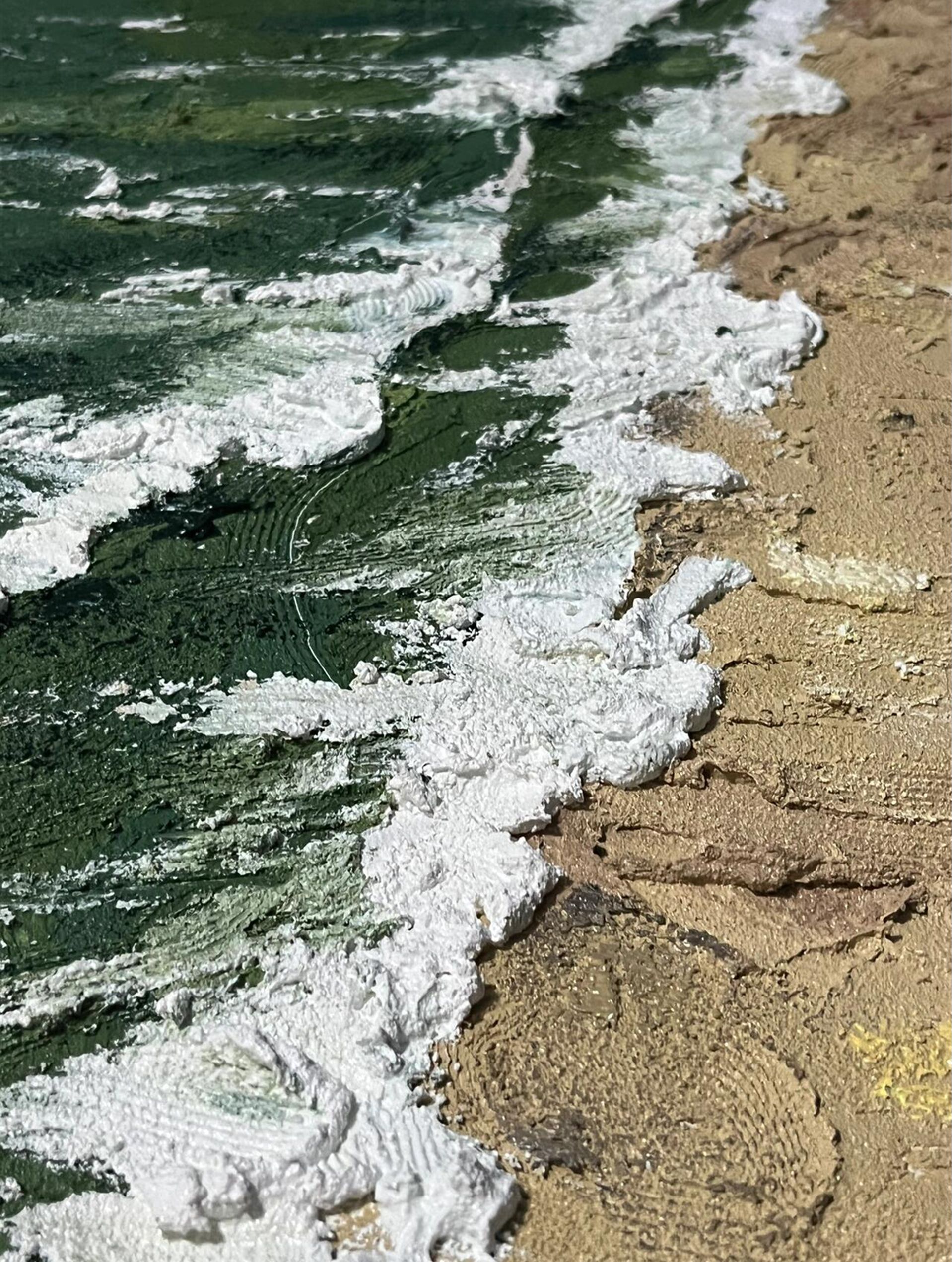Capturing the dynamic essence of ocean waves in oil painting requires more than just color accuracy; it demands a deep understanding of texture and movement. The artwork “Deep Green Sea Textured Painting” serves as a prime example of how texture can bring seascapes to life.
Understanding Wave Structures
Begin by studying real-life waves or high-quality photographs. Notice the crest, trough, and the way light interacts with the water. Sketching these observations can help in planning your composition.
Choosing the Right Materials
- Canvas: A medium to large-sized, primed canvas.
- Oil Paints: Titanium White, Ultramarine Blue, Phthalo Green, Burnt Sienna.
- Tools: Palette knives, brushes of various sizes, and possibly modeling paste for added texture.
Applying the Impasto Technique
Impasto involves applying thick layers of paint to create a three-dimensional effect. Use a palette knife to lay down heavy strokes, mimicking the peaks and valleys of waves. This technique not only adds depth but also captures the energy of the sea.
Detailing the Sea Foam
For the frothy sea foam, mix Titanium White with a touch of blue to avoid a stark contrast. Apply with a stippling brush or sponge to create a bubbly texture. Layering is key; build up the foam gradually to achieve a realistic appearance.
Final Touches
Add highlights where the light hits the waves and deepen shadows in the troughs to enhance the three-dimensional effect. A glaze can be applied over the entire painting to unify the colors and add a subtle sheen.
